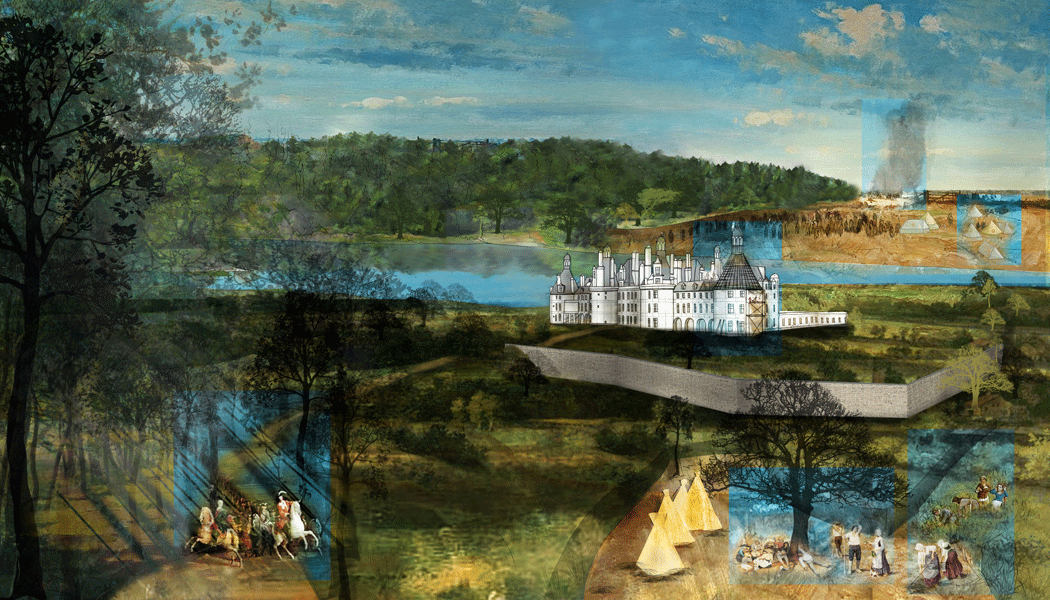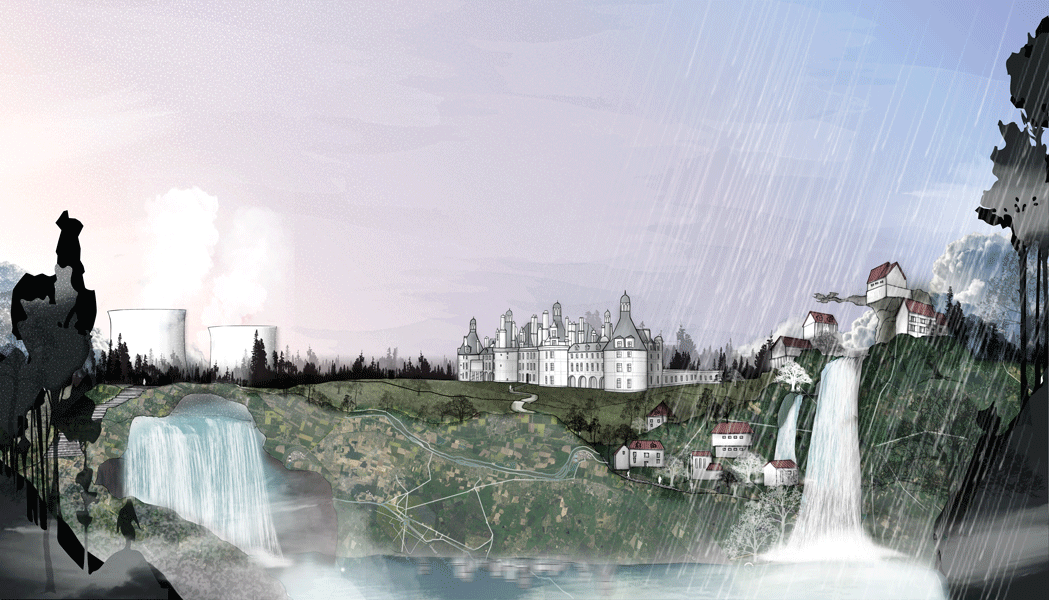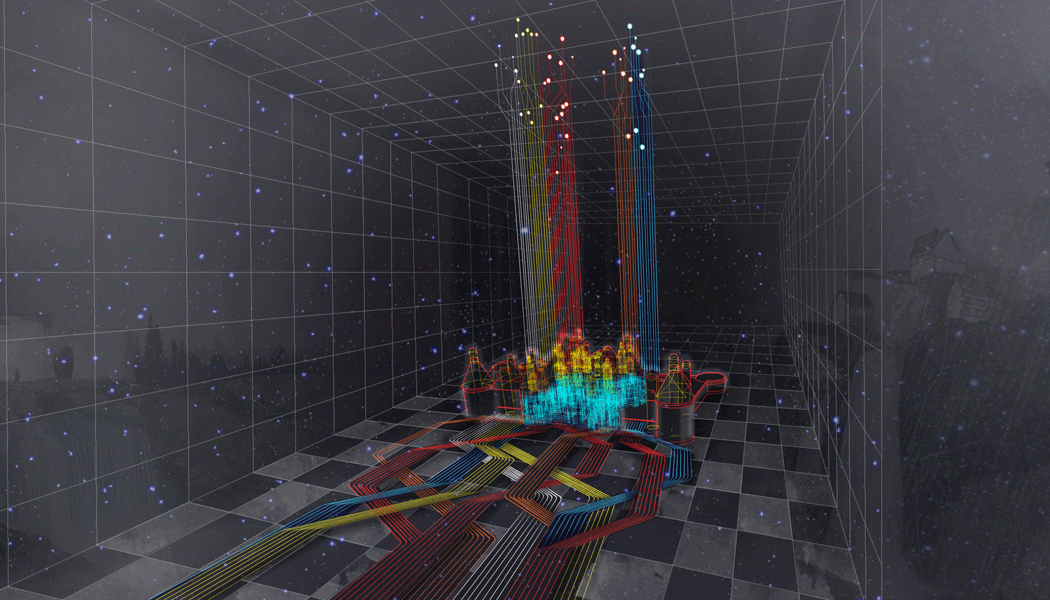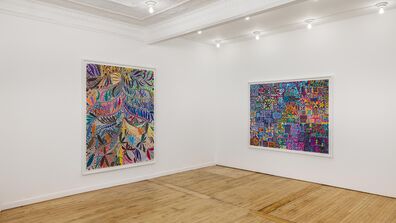
Reimagining Time: Château de Chambord at 500
by Ana Sekler (MA 2016)

How does a prestigious yet unfinished French castle celebrate its 500th birthday? By inviting 18 schools to imagine its finished state and by hosting an exhibition of course. In preparation for this 500th anniversary, the Domaine National de Chambord and Dominique Perrault Architecture selected 18 schools from around the world, including SAIC, to imagine what the Château de Chambord would look like if it was ever completed, and consider utopia as a deeply embedded machine in the château’s creation and history. The projects are exhibited at Chambord, 1519–2019: Utopia at Work, from May 26–September 1, 2019.
In 2018, five SAIC students in the six-week multidisciplinary summer studio course, Realizing Chambord, taught by Professor Odile Compagnon (Architecture, Interior Architecture, and Designed Objects) and Lecturer Jade Boudreaux (MArch 2016, Architecture, Interior Architecture, and Designed Objects), responded to this iconic symbol of the French Renaissance through the narrative of the Argo, Jason’s mythical ship.

Comparing the château with the Argo and themselves with Argonauts, the class was able to use the narrative to speak about architecture in a way that was accessible to people from a variety of fields. “The idea was to see the château as an instrument to understand the world, to read its walls, and listen to them while continuing to write as knowledge expands,” says Compagnon.
Chambord château leaves much to the imagination because of the mysteries around its conception. Although the real architect remains unknown, Leonardo da Vinci, whom Francis I, king of France, invited to live nearby as "first painter, architect and engineer of the king” is presumed to have had an influence. SAIC students related the architectural process to what drove the design of Chambord when da Vinci and Francis 1st imagined it. Compagnon adds, “it gave the group an opportunity to discuss what architects do and what their role might be in society, then and now.”

Since the class had not seen the château of Chambord, they relied on their own research about its history and Compagnon and Boudreaux’s knowledge of the castle to realize their project. The students found an interesting and serendipitous parallel between the design of Chambord and the design of the first Book of Hours (prayer books) to be printed for Francis 1st during their visit to the Newberry Library. Geoffroy Tory’s typeface design, which could be used with the newly mechanized printing press, mirrored the architectural innovations at Chambord, such as the double-helix staircase.
This discovery was reflected in the team’s approach to designing for a future Chambord, while recognizing the past and present of the castle. The drawings they produced show how Chambord encompasses the continuity of past, present, and future. For its contribution to the exhibition, the class produced a series of 20 digital images and one 90-second video.
Two SAIC students, Charlie Miller (BA 2020) and Nicole Vendelin (BA 2019), along with Compagnon and Boudreaux attended the exhibition opening. Miller and Vendelin presented the team’s project at the accompanying symposium, which brought together 200 students and faculty from all 18 schools. Dominique Perrault Architecture is also planning an online version of the exhibition so that the work from Realizing Chambord will be a part of the ongoing dialogue about the château. “Chambord is considered one of the most beautiful châteaus in France, and through their research and exploration the students came to understand and make clear some of the reasons behind its iconic architecture,” says Boudreaux.
View the full exhibition catalog at the John M. Flaxman Library.
